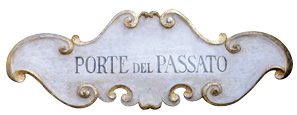THE
AREA
THE
AREA
It is the sort of marriage that comes through dialogue with nature, architecture and local craftspeople.
The Valtiberina, as well as more recently the Brianza and Canton Ticino are a source of elaboration, discussion and representation, for us, this is a rich environment for research and the reworking of ideas.
They show to the potential, exclusive customer-tourist an attraction to the landscape and the environmental. Out of this association and an eventual visit to our showroom, as well as from the point of view of food and wine, they demonstrate the great traditions of the area.
Below are some descriptions and guides that explain to visitors about these wonderful lands.

VALTIBERINA
Valtiberina is a valley located between Tuscany, Umbria and Romagna, crossed by the river Tevere . The name Valtiberina properly refers to the wide basin created by the river Tevere that extends from Montedoglio until reaching Santa Lucia, a small town in the south of Città di Castello. This name is commonly used as a synonym of the Alta Valle del Tevere . In geographic , social and economic terms, it is a single basin with about 109,000 inhabitants . We usually distinguish between Tuscany and Umbria Valtiberina, according to the division established during Middle Age in 1385-1441.
Alta Valle del Tevere extends from the Municipalities of Anghiari, Badia Tedalda, Caprese Michelangelo, Monterchi, Pieve Santo Stefano, Sansepolcro, to Sestino.
The most famous town of Tuscan Valtiberina is Sansepolcro
Situated on the upper reaches of the Tiber river, the town is the birthplace of the painters Piero della Francesca, Raffaellino del Colle (a pupil of Raphael), Santi di Tito, and Angiolo Tricca. It was also the birthplace of the Italian mathematician Luca Pacioli, and of Matteo Cioni, who translated into Latin Piero della Francesca’s treatise about perspective in painting (De Prospectiva Pingendi).
Piero della Francesca , one of the most famous artists of the Italian Renaissance , was born here. Manhy of his famous works are exposed in Sansepolcro, in chuerces and in particular ìt the Civic Museum where is exhibited his masterpieces: the “Resurrection of Christ ” ( c.1460 ) , the ” San Giuliano ” ( 1454-1458) ,” Altarpiece of Mercy ” ( 1444-1464 ) . It is also interesting to visit the House- Museum of Piero della Francesca , an elegant architecture that seems to recall the style of Michelozzi ( 1396-1472 )
According to tradition, the town was founded around 1000 AD by two pilgrims, Arcanus and Aegidius, who brought a stone from the Church of the Holy Sepulchre (thus, San Sepolcro) with them from the Holy Land. They founded an oratory dedicated to Saint Leonard, on the site of the current Cathedral.From 1415 to 1420, Sansepolcro developed around the chapel.
The first historical mentions of Sansepolcro are slightly later, referring to the Benedictine Abbey, the “Badia”, around which the walled commune clustered. During the conflicts between Guelfs and Ghibellines, the town’s factions were headed by prominent local families, including the Pichi, Bercordati, Graziani and Bacci.[1]
The city was ruled from Citta’ di Castello, Milan, then by the Papacy; in 1367 Pope Urban V gave the town and its surrounding contrada to Galeotto Malatesta family, whose heirs ruled it until control was assumed by Florence.
During World War II the town was saved from destruction by the efforts of Tony Clarke, a British Royal Horse Artillery officer who halted the Allied artillery attack in order to save Piero della Francesca’s fresco Resurrection.[2]
Sansepolcro now plays the role of a place of reference and cultural integration at the crossroads of four regions of Tuscany , Marche , Umbria and Emilia – Romagna .The most important of Umbrian Valtiberina is Città di Castello.
The town was founded by the Umbri tribes. The Romans knew it as Tifernum Tiberinum (“Tifernum on the Tiber”)[1] or Civitas Tiberina. Just nearby, Pliny the Younger built his villa in Tuscis, which is identified with walls, mosaic floors and marble fragments surviving at a place now called Colle Plinio
In 550 AD, Tifernum was largely destroyed during the Ostrogothic campaign by Fantalogus, at the orders of Totila. The town was subsequently rebuilt by its bishop, Floridus, around a castle, and renamed first Castrum Felicitatis and later Civitas Castelli.
In 550 AD, Tifernum was largely destroyed during the Ostrogothic campaign by Fantalogus, at the orders of Totila. The town was subsequently rebuilt by its bishop, Floridus, around a castle, and renamed first Castrum Felicitatis and later Civitas Castelli. By the Donation of Pepin of the Frankish king Pepin the Short in 752, it went to the Holy See. After it became free common. It was ruled by the Vitelli family, even after Cesare Borgia attached the city more directly to the Holy See.
The family Vitelli, desiderous to lend a new town-looking reflecting their power, they built elegant palaces , churches and monuments , that are still considered as important examples of the refined Tuscan architecture of that period . The Vitelli family ruled the city during the XI century.
In 1474, Sixtus IV sent his nephew, Cardinal Giuliano della Rovere (later Julius II); after fruitless negotiations he laid siege to the city, but Vitelli did not surrender until he learned that the command of the army had been given to Duke Federico III da Montefeltro. The following year Vitelli tried unsuccessfully to recapture the city; fear of Cesare Borgia induced him to desist, since Cesare Borgia had his father strangled and Città di Castello added to the papal possessions.The city has memorialized the abstract painter and sculptor Alberto Burri, who was born in Città di Castello, with the “Fondazione Palazzo Albizzini Collezione Burri” housing a large permanent museum of his works in the former Palazzo Albizzini.
